Invisalign – Downers Grove, IL
A Clear Path Toward a Straight Smile
Would you like to straighten your teeth without the hassle of metal braces? You're in luck! At Dentique Dental of Downers Grove, we serve patients in Downers Grove, Lemont, and the surrounding communities. Straighten your teeth with Invisalign® for the perfect smile!
Invisalign® SmileView™
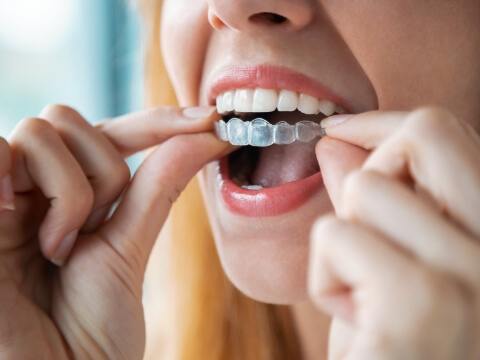
Meet with your dentist and get a sneak peek at your new smile with your free consultation
Using the iTero Element® scanner, your Invisalign dentist can take a fast and precise 3D digital scan of your teeth and map out a custom treatment plan just for you.
Schedule your free consultation today!
How Does Invisalign Work?
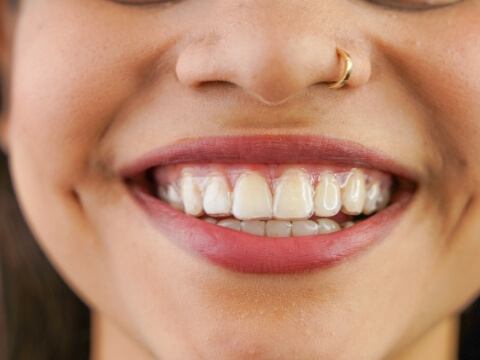
Invisalign® is a series of clear aligners that gradually move teeth to their ideal positions. Experienced with Invisalign®, Dr. Xhelo personally programs each tooth movement to guarantee that teeth are moved safely and correctly. At our Downers Grove dental office, our clear aligners are custom-made for you! Using digital technology, we create a personalized treatment plan for each patient that works to gradually and painlessly move teeth into place. Best of all, the clear trays are virtually invisible and removable, making them one of the most discreet orthodontic methods while also allowing you to enjoy your favorite foods throughout the process.
Benefits of Invisalign
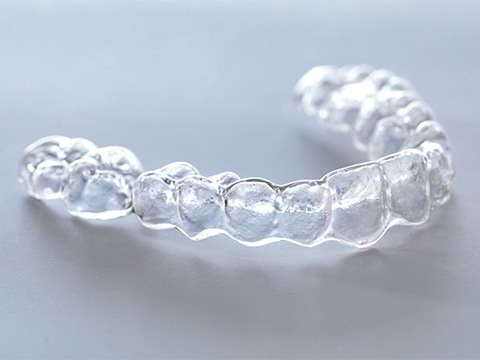
Every day, patients make the decision to straighten their teeth with Invisalign. Why? Well, there is more than one reason! In this next section, you’ll find just a few reasons more than 12 million people around the world have opted for clear aligners (and why you should consider doing the same).
The Aligners Are Practically Invisible

Since Invisalign aligners are see-through and custom-made from impressions of your teeth, they are practically invisible. In fact, your closest friends and family may never notice that you are on your way to a new smile! As a result, it’s perfect for image-conscious teens and adults who are looking for a more aesthetically pleasing and subtle alternative to traditional braces.
Oral Hygiene Is Much Easier

With traditional braces, brushing and flossing can be difficult. That’s why many patients have to buy interproximal toothbrushes, pre-threaded floss, and other special oral hygiene products. Fortunately, that’s not the case with Invisalign. Since the aligners are removable, brushing and flossing your teeth is much simpler. This helps to keep your teeth and gums healthy too!
There Aren’t Any Dietary Restrictions

Raw carrots, whole apples, and tortilla chips are just a few of the foods that patients with traditional braces need to steer clear of in an effort to avoid an orthodontic emergency. Since Invisalign doesn’t have metal brackets and wires, you won’t need to abide by any dietary restrictions. All you need to do is remove your aligners before eating and put them back on shortly after.
The Average Treatment Timeline Is Shorter

The average treatment timeline with Invisalign is 12-18 months. Traditional braces, on the other hand, usually take several years. When you come in for your clear aligner consultation, we will conduct a comprehensive oral exam and learn about your dental history so we can provide you with an estimate of the cost and your treatment timeline. We’ll also share what you can do to avoid treatment plan delays!
You Can Take Your Aligners Out for Special Occasions
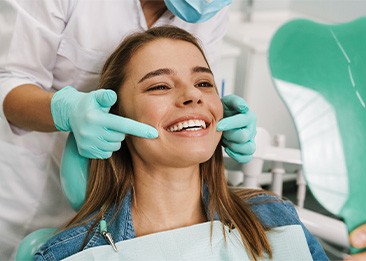
Unlike traditional braces (which can only be removed by a dental professional), Invisalign aligners can be removed! So, if your wedding is rapidly approaching, you’re taking your senior photos soon, or you have a music recital, you can take them off.
Note: To avoid treatment plan delays, you need to wear your aligners for 20+ hours a day. If you miss the mark, then do your best to make up that time the following day.
Living with Invisalign Aligners

Invisalign is not as complicated as it might seem. The flexibility these trays provide makes treatment much more enjoyable than if traditional metal brackets and wires were required. Wearing aligners to straighten your teeth offers a more favorable lifestyle approach – one that doesn’t inhibit your ability to maintain a professional appearance at work or have fun with your friends at school. Although some adjustments may be required while wearing Invisalign, you don’t need to worry; in fact, below are some tips to consider when living with Invisalign.
Wearing Your Trays
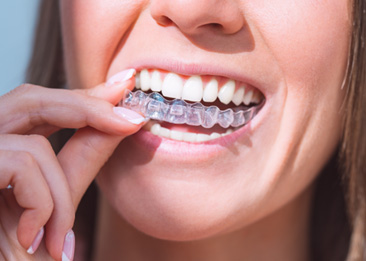
Removability is one of the more favorable aspects of Invisalign; however, it does come with a level of responsibility. Since these trays are not affixed to your teeth like traditional braces, you must commit to wearing them for 20-22 hours each day. Your smile needs continuous pressure for your pearly whites to shift accordingly, so make sure you’re abiding by this rule of thumb if you want to avoid a possible delay.
Cleaning Your Aligners
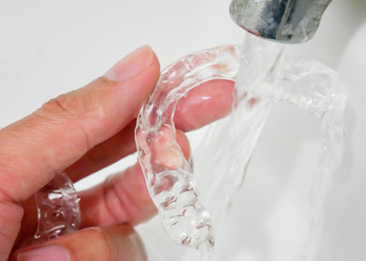
Invisalign aligners rest against your teeth almost all day, so naturally, they attract bacteria, saliva, and other harmful particles. This is why it’s important that you clean them regularly (twice a day and after meals), as cavities and gum disease can develop if proper oral hygiene and aligner cleaning are avoided. Careful brushing and rinsing can eliminate minor stains as well as clear away bad bacteria so that it does not transfer onto your teeth.
Eating & Drinking

Wearing Invisalign allows you to eat all your favorite foods – there are virtually no food restrictions. However, the key is remembering to take out your trays before you start eating and drinking. The pressure generated by chewing and biting can damage your aligners, causing your dentist to evaluate whether you should move on to the next set of trays, return to your previous ones, or have new ones created to keep your smile on track.
Losing or Damaging a Tray
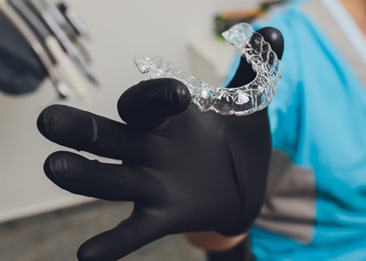
Placing your trays in a napkin while eating, laying your aligners down on your desk before giving a presentation at work, leaving your Invisalign within reach of small children or pets – these are all viable ways you might lose or damage your trays. Your dentist recommends buying one or two protective cases to keep your aligners in when you’re not wearing them. Although their time spent in these spaces should be minimal, knowing they’re protected and safe from harmful particles can give you greater peace of mind.
Routine Check-Ins

Traditional braces often require patients to spend an hour or more every few weeks having their archwire tightened or replaced to keep tooth movement on track. With Invisalign, though, you’ll only need to see your dentist every 4-6 weeks to make sure you’re making good progress. We’ll quickly evaluate the state of your smile and how quickly your teeth are moving to determine if adjustments are required. These visits should only take 30 minutes or less.
Who Can Invisalign Help?

The desire for a straight and beautiful smile is universal. Whether you’re an older patient wanting to impress at the office or a bright-eyed youngster about to set off for college, Invisalign can help you achieve your goals. While these clear aligners may not be for everyone, our team at Dentique Dental is dedicated to helping you find a path forward. If you want to know how Invisalign could help shape your grin, read more below.
Crowded Teeth
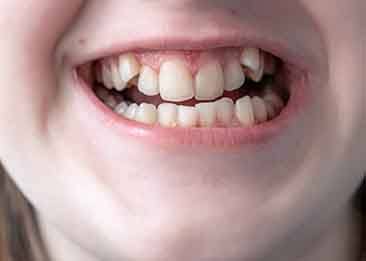
Tooth crowding generally happens as you grow older and your teeth shift due to dental issues, diet, or the aging process itself. Crowded teeth present a problem because they are much more difficult to clean. This increases your risk of tooth decay and gum disease as bacterial plaque builds up in places you can’t reach. Invisalign moves your teeth back into a natural alignment, making oral hygiene much easier.
Gaps Between Teeth

Tooth loss is one of the primary culprits of tooth gaps, but they can also be caused by genetics and other factors like your tooth shape and size. Gaps in your teeth expose them to chipping and enamel erosion more frequently and can create traps where bacteria and food particles can hide. Invisalign can gently guide your teeth back together over time and restore your smile.
Overbite
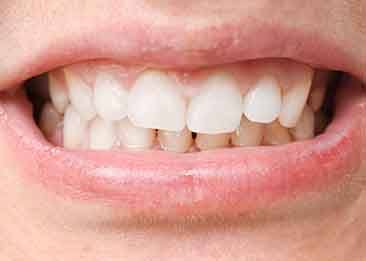
While your top teeth should slightly overlap your bottom ones, they shouldn’t hang over so far that it causes discomfort. In the case of an overbite, you may have trouble opening and closing your mouth or find that your top teeth become damaged more easily. Invisalign aligners can be combined with various attachments like buttons and elastics to gradually pull your jaw back into a more natural alignment before your dental health suffers.
Underbite
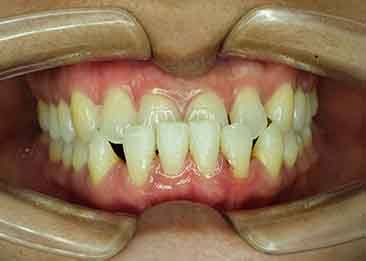
The opposite of an overbite is an underbite where your bottom teeth just out over your top ones. If left untreated, this bite issue can increase your risk for sleep disorders, speech impediments, and even sinus infections. Thankfully, Invisalign clear aligners can be used to effectively pull your lower jaw back and your upper jaw forward, bringing them back into a uniform alignment and relieving pressure in your facial structure.
Crossbite
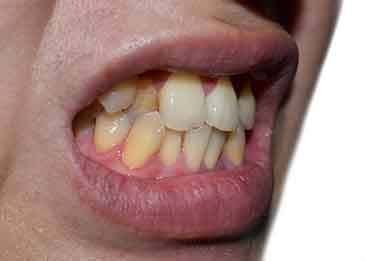
When you have some teeth that stick out and others that tilt in, a crossbite can occur. Over time, this mismatched alignment can lead to temporomandibular joint disorders (TMD) as well as loose teeth and receding gums prone to sensitivity and decay. A custom-fitted set of Invisalign trays combined with attachments can gradually turn and realign your teeth and jaw for better comfort.
Open Bite
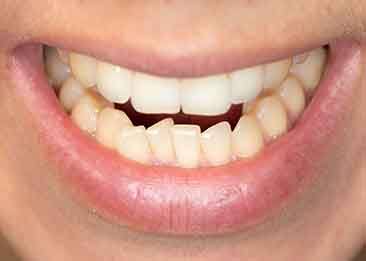
Even when you try to close your mouth with an open bite, your teeth in the front won’t touch. Childhood development issues like prolonged pacifier use or thumb-sucking are usually to blame for this as they can lead to an underdeveloped jaw. As you grow older, this can cause speech and digestive issues as it can be difficult to chew or place your tongue properly. With Invisalign, we can help bring your front teeth back together to increase your confidence and soothe your smile.
Understanding the Cost of Invisalign
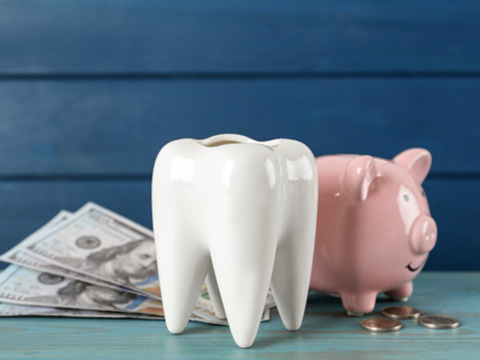
Before you commit to Invisalign, you’d be wise to learn about its price. That much is natural – this clear aligner treatment is a major financial investment for anyone. With that said, the cost of Invisalign varies by patient; you must consult Dr. Shuaipaj for a precise estimate. Our team will also strive to make your care affordable, outlining its pricing factors and payment options for you. Just keep reading to learn the relevant details, or call our office.
Factors That Affect the Cost of Invisalign
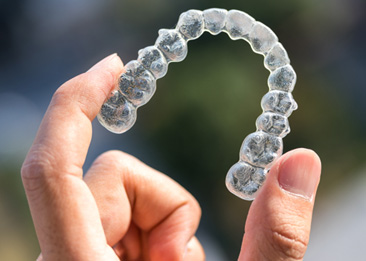
Our team will perform a close oral exam as part of your consultation. That way, we can confirm (among other things) the factors that affect your treatment cost. These typically include:
- Number of Arches – In truth, Invisalign doesn’t have to treat both arches of your smile. You can have it treat one for a lower price.
- Complexity of Care – As the required tooth movements get more complex, Invisalign becomes pricier.
- Treatment Timeline – The longer a patient has to wear their trays, the more expensive the treatment gets.
- Patient Compliance – You’ll face delayed treatment results if you neglect Invisalign’s best practices. From there, you’d be forced to pay a higher price for care.
Invisalign vs. Mail-In Aligners: Which Costs More?
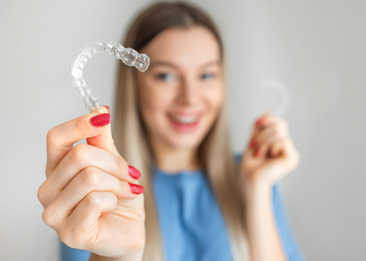
Invisalign has a higher upfront cost than mail-in aligners, with treatment costing $3,000 to $8,000. However, it’s still a better long-term financial choice.
Remember that mail-in aligners are essentially a DIY project. Since they don’t get input from a dentist, using them can lead to various oral issues – poorly made impressions, bad aligner habits, etc. Such problems often require professional care to fix, thus defeating the entire point of mail-in aligners.
In contrast, Invisalign involves a dentist’s oversight from beginning to end. We at Dentique Dental have Dr. Shuaipaj oversee your treatment to ensure everything stays on track. With his feedback, you can trust you’ll get high-grade impressions and successful care – everything that justifies Invisalign’s price.
Does Dental Insurance Cover Invisalign?

Dental insurance doesn’t generally cover Invisalign, as plans don’t often apply to orthodontics. Even those policies that do include orthodontic work typically exclude aligners.
With all that said, there are exceptions to these rules. Some dental plans willingly cover up to 50% of Invisalign’s cost, reducing a patient’s financial burden. You should thus check your plan for potential benefits; our office will even help you do so.
Options for Making Invisalign Affordable

Even without dental insurance, Invisalign can still be affordable. You simply need to rely on our practice’s helpful payment options for an assist. At Dentique Dental, we offer several great choices.
For example, you could join one of our dental membership plans. This option provides various discounts in exchange for an annual fee of $150. In particular, it can provide 20% off all major services.
You shouldn’t have to “break the bank” to start your Invisalign journey. Instead, visit us soon – we’ll help you finance your straight smile!
Invisalign FAQs
Why Is Wearing My Aligners for 20+ Hours a Day Important?
Part of your treatment plan will involve the assumption that you’ll wear your Invisalign trays for 20-22 hours every day to successfully move your teeth into their proper positions. Having them on as long as possible will allow your pearly whites to gradually shift as planned, otherwise, they will start to revert to their previous spots/angles. To make it easier for you to keep on track with how long you wear your aligners, make sure to use the timer on your phone so that you can meet the requirements for straightening your smile.
How Long Does Invisalign Take?
On average, Invisalign patients can potentially finish their treatments in just 12 to 18 months—which is still four months shorter than traditional braces. Of course, different factors can affect the specific amount of time it’ll take your process to be completed. For instance, those with less severe misalignment issues can sometimes achieve their results in about six months. Other patients might need more than 18 months, especially if they neglect to wear their aligners for 20-22 hours every day.
What Should I Do If My Trays Are Turning Yellow?
In most cases, clear aligners that are turning yellow may be due to poor oral habits, such as sipping on coffee or sodas while still wearing them. During your orthodontic process, make sure to remove your Invisalign trays before drinking or eating anything (other than pure water) so that you can avoid discoloring or even damaging them. Clean your aligners with thorough brushing and rinsing, and be sure to soak them in your cleaning crystals while you’re having a meal.
Who Isn’t a Candidate for Invisalign?
Invisalign is a great option for the majority of teens and adults who are struggling with misaligned teeth. However, those with more severe malocclusions might require treatment from traditional braces instead, as they can be used to correct the placement of the jaw more effectively. Invisalign is also best for those who can commit to a strict regimen for straightening their teeth, such as wearing the trays for 20-22 hours a day. Otherwise, the treatment plan can become significantly delayed and can potentially cost more in the long run.

